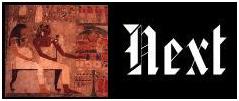

During the early 2nd Intermediary Period, a group of Asians, known as the Hyksos, established their own dynasties in Egypt. Little is known about their origins, or about the way they gained control over large parts of Egypt. It is commonly assumed that they invaded Egypt and overtook it by force. This theory may be supported by the name the Egyptians themselves gave to the Hyksos: "rulers of the foreign countries", which may indicate that the Hyksos ruled outside Egypt before invading it. The weakness of the Egyptians at the beginning of the 2nd Intermediary Period may have invited a military invasion. On the other hand, there is no real proof of military conflicts between the Egyptians and the Hyksos at the end of the Middle Kingdom. It is also possible that the Asian settlers who had been coming to Egypt for some generations had become so powerful, that they were able to gain political control and establish their own dynasties, without a military show of force. The fact that some of them used Egyptian names and that they did not try to integrate their own Asian heritage into the Egyptian culture, may indeed lead to suppose that the Hyksos had been living long enough in Egypt before they seized power to have adapted themselves to the Egyptian culture. By whatever means the Hyksos came into power in Egypt, they were largely accepted throughout the country as the ruling dynasty. They did, however, tolerate other dynasties to coexist with their own. The 15th Dynasty was not the only dynasty of Hyksos: there was also the less important 16th Dynasty, about which little is known. It is possible that there were still some kings of the 13th Dynasty who ruled a part of the country. The kings of the 14th Dynasty -if there ever was a 14th Dynasty- are said to have ruled the Western part of the Delta. And in Thebes ruled an Egyptian house: the 17th Dynasty. Although the time the Hyksos ruled Egypt has often been depicted as a time of chaos and misery (especially by later generations of Egyptians), it was also a time of technological advance. Before the Hyksos, Egypt has stayed largely ignorant of the advances made in the rest of the Ancient Near East. Copper and bronze were introduced into Egypt during this period, together with many new tools and, most importantly, weapons. The rule of the Hyksos during the 2nd Intermediary Period would prepare the Egyptian for the adventure of the New Kingdom.
Around 1550, the 17th Dynasty first started opposing the dominion of the Hyksos kings. A New Kingdom tale teaches us how the Hyksos king Apophis sent a letter to the Theban king Seqenenre, complaining that the noise made by Seqenenre's hippopotamuses prevented him from sleeping. Seqenenre, of course, would not take such an insult, but unfortunately, this is where the story breaks of. That this story may have been based on fact, is suggested by the mummy of Seqenenre, which shows that he died a violent death, possibly on the battlefield. The first recorded traces of a war against the Hyksos are dated to the reign of Seqenenre's son, Kamose. Two stelae commemorate Kamose's struggle against the Hyksos and their vassals. Against the advice of his council, Kamose started or continued the war, punishing all those who had collaborated with the foreigners. He almost succeeded in conquering Avaris, the capital of the Hyksos in the Delta, but he too may have fallen on the battlefield. It would be Kamose's younger brother and successor, Ahmose, who would finally succeed in overthrowing the Hyksos. With his reign, a new period of prosperity and wealth would begin: the New Kingdom.

